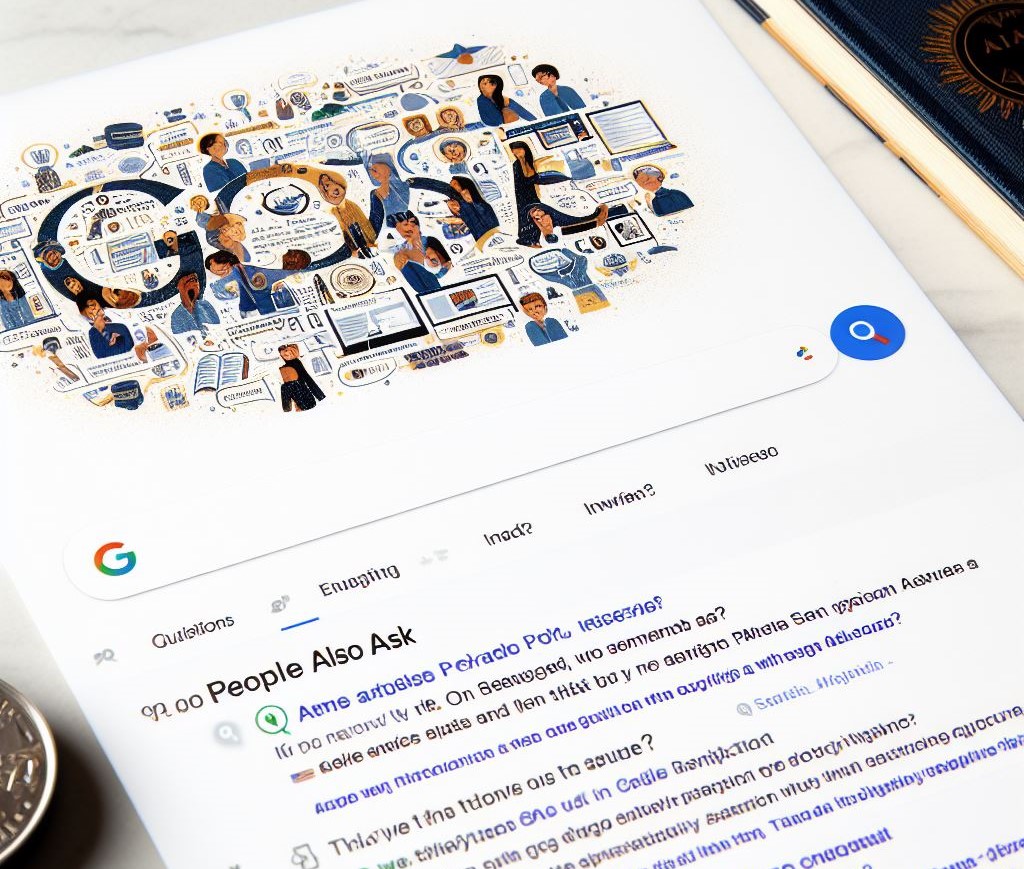Optimizing for “People Also Ask” on Google SERPs

The digital landscape is ever-evolving, and with it, the techniques to rank higher on search engines. One of the critical areas to focus on in today’s SEO world is the “People Also Ask” (PAA) feature on Google’s search engine results pages (SERPs). But what is PAA, and why is it essential for your website’s visibility? Let’s get into it.
What is “People Also Ask”?
PAA is a unique feature on Google’s SERPs that provides users with additional questions related to their initial search query. Not only does it present these questions, but it also offers quick, concise answers. This feature aims to provide users with a comprehensive understanding of their search topic, offering them more avenues to explore and, in turn, keeping them engaged on Google.
Why Should You Optimize for PAA?
1. Enhanced Click-Through Rate (CTR)
When your content appears in the PAA box, it stands out from the regular search results. This prominence can lead to an increased CTR as users are more likely to click on these highlighted questions and answers.
2. Prime Positioning on SERPs
While the traditional goal for many SEOs is to rank in the top 10 organic results, appearing in the PAA box can place your content right at the top of the SERPs, even above the number one organic result in some cases.
3. Boosted Brand Awareness
Being featured in the PAA box not only drives traffic but also enhances your brand’s visibility. Users perceive brands that appear in such features as more authoritative and trustworthy.
How to Optimize for “People Also Ask”
Now that we understand the significance of PAA, let’s explore some actionable strategies to optimize your content for this feature:
1. Start with a Dictionary-Style Answer
Begin your article or blog post with a clear, concise answer, much like a dictionary would. This approach provides a straightforward response to potential questions, making it more likely for Google to pick it up for the PAA box.
2. Incorporate Lists
Google loves structured data. By using numbered or unnumbered lists in your content, you make it easier for the search engine to extract relevant information. For instance, if you’re writing about “Top 5 Benefits of Green Tea,” presenting the benefits in a numbered list can increase your chances of being featured in the PAA box.
3. Use Questions in Your Subheaders
Instead of generic subheadings, frame them as questions. This tactic aligns with the format of the PAA feature. For example, instead of a subheading like “Green Tea and Weight Loss,” you could use “How Does Green Tea Aid Weight Loss?”
The “People Also Ask” feature is more than just an additional SERP element; it’s an opportunity. By optimizing your content for PAA, you can drive more traffic, position your brand as an industry leader, and stay ahead in the ever-competitive digital space. So, the next time you’re crafting content, keep these strategies in mind and make the most of this powerful Google feature.
FREE CONSULTATION FORM
RELATED BLOG
How Can You Optimize Content for SEO to Boost Your Rankings?
In today’s digital age, having a strong online presence is crucial for any business looking to succeed. Search Engine Optimization (SEO) plays a vital role in making this possible by improving the visibility and ranking of your web pages in search engines like...
How Can Local Search Engine Optimization Improve Your Business Visibility?
In today's digital age, having a strong online presence is crucial for businesses of all sizes. Local search engine optimization (SEO) is a powerful strategy that helps businesses connect with potential customers in their local area. By optimizing for local...
How Can Digital Marketing Transform Your Business in 2024?
In today's fast-paced business world, digital marketing has become an essential tool for companies looking to grow and succeed. We at Rank Your Niche understand the power of effective online marketing strategies and how they can revolutionize your business...



